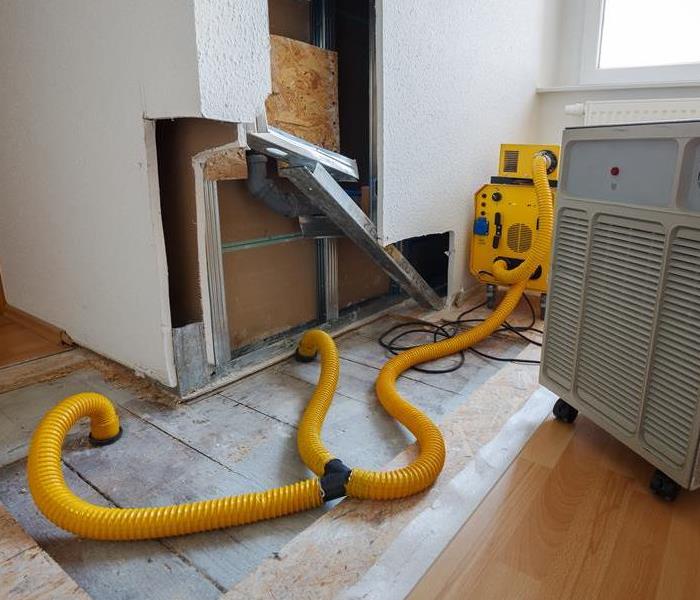Causes, Risks, and Prevention of Secondary Water Damage
8/10/2023 (Permalink)
Water damage is a distressing experience for any homeowner or property owner. It not only causes immediate damage but can also lead to secondary issues that may worsen over time if left unaddressed.
Secondary water damage refers to the additional harm that occurs after the initial water intrusion, often resulting from prolonged exposure to moisture or inadequate restoration efforts. In this blog post, we will delve into the causes, risks, and prevention of secondary water damage to help you understand the importance of comprehensive restoration.
Causes of Secondary Water Damage
- Moisture and Humidity
Excess moisture and high humidity levels in the affected area can lead to the growth of mold and mildew. These microbial organisms thrive in damp environments and can cause health issues while further damaging the structure and belongings.
- Structural Damage
Extended exposure to water can weaken the structural integrity of building materials such as drywall, wood, and insulation. This can lead to warping, buckling, and even collapse if the damage is severe. Structural damage requires costly repairs and can compromise the safety of the property.
Risks of Secondary Water Damage
- Increased Restoration Costs
Addressing secondary water damage often requires more extensive restoration efforts and can result in higher costs. Mold remediation, structural repairs, and other corrective measures are not only time-consuming but can also disrupt your daily life or business operations.
- Extended Restoration Timeline
Failure to address secondary water damage promptly can lead to a prolonged restoration process. This can disrupt your living or working environment, causing inconvenience and potential financial losses.
Prevention of Secondary Water Damage
- Prompt Water Extraction
After experiencing water damage, it is crucial to remove standing water and dry out the affected area as quickly as possible. Employ professional water extraction techniques and utilize high-powered drying equipment to mitigate moisture and humidity.
- Thorough Drying
Ensure that all affected surfaces, including walls, floors, and furniture, are thoroughly dried to prevent lingering moisture. This may involve the use of dehumidifiers, fans, and proper ventilation. Pay attention to hidden areas and hard-to-reach spaces that are prone to moisture buildup.
- Professional Restoration Services
Engage the services of a reputable water damage restoration company with expertise in handling both primary and secondary damage. These professionals have the knowledge, experience, and equipment to effectively address water damage, mitigate secondary issues, and restore your property to its pre-damage condition.
- Mold Prevention
Actively prevent mold growth by addressing water damage promptly. Properly dry out affected areas, discard severely damaged materials, and conduct mold remediation if necessary. Regularly inspect your property for signs of mold growth and promptly address any issues.
Understanding the concept of secondary water damage is crucial for effective water damage restoration. By recognizing the causes and risks associated with secondary damage, you can take proactive measures to prevent its occurrence. Prompt action, thorough drying, and professional restoration services are essential in mitigating secondary water damage and ensuring a safe and healthy environment for your property and its occupants. Remember, comprehensive restoration is key to preventing long-term complications and minimizing the financial and health impacts of water damage.





 24/7 Emergency Service
24/7 Emergency Service
